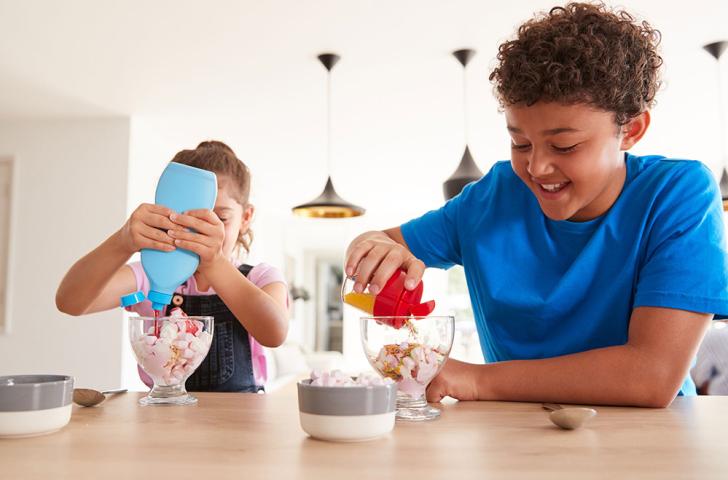Celebrate National Ice Cream Month With STEM
Everyday STEM Trends in STEMDate July 2, 2025
Est. Reading Time 3 mins
Did you know July is the official National Ice Cream Month? It’s the perfect time of year to cool off, celebrate and scoop up some fun with a sweet treat. Whether your ice cream is topped with whipped cream or decorated with sprinkles, there’s a whole world of STEM packed into every cone. Read on to learn fun facts about this go-to summer tradition and don’t miss the bonus homemade recipe you can try yourself!
Learn Fun Facts About Ice Cream
Did you know that out of any country, the United States consumes the second most ice cream in the world? Here are some cool STEM facts about this popular frozen treat.
An Edible Emulsion
Emulsions are an important part of food science. An emulsion is a mixture of liquids where one liquid does not totally dissolve. You also can think of it as a mixture of two liquids that aren’t typically mixed together. In ice cream, tiny droplets of fat from milk and cream are mixed into a solution of water, sugar and ice. By lowering the temperature of the mixture to 0° F or below, all ingredients are frozen in place for a smooth and creamy treat.
The Science Behind Brain Freeze
Have you ever experienced the discomfort of brain freeze? Although temporary, the sensation can feel like a mini headache. So, how could something as wonderful as ice cream cause it? When something extremely cold or frozen touches the roof of your mouth, it causes the blood vessels in your head to shrink (constrict) and quickly open back up (dilate). Your brain gets a bit confused by all this commotion and sends out a pain signal – brain freeze!
Why Does Ice Cream Melt?
Savor the moment! Ice cream quickly can turn into a liquid state when it’s exposed to a temperature above its freezing point. As it begins to absorb heat, your delicious ice cream can start to melt on a sunny day due to the heat energy causing the molecules to move faster.
Ice Cream Floats
Ice cream floats are a fizzy, fun and foamy way to explore chemistry! Experiment with the bubbly reaction between soda’s carbon dioxide and creamy ice cream. With each sip, you’ll notice exciting STEM connections.
Discover Cool Invention Connections
Beulah Louise Henry
Known best for being one of the most prolific inventors of the 1920s, National Inventors Hall of Fame® Inductee Beulah Henry created a great variety of devices to make daily life easier. In fact, she developed more than 100 inventions and earned 49 U.S. patents! The first of her many inventions was a vacuum-sealed ice cream freezer, patented in 1912.
Louis Pasteur
National Inventors Hall of Fame Inductee Louis Pasteur studied fermentation (the conversion of sugar) and invented the pasteurization process, which is commonly used in dairy products. To pasteurize ice cream, the mixture is heated to a specific temperature followed by rapid cooling to eliminate harmful bacteria pathogens, ensuring ice cream can be enjoyed safely.
Make Your Own Homemade Ice Cream
Have you seen how ice cream is made in a bag? Exploring the science behind sweet treats is a great way to have fun with STEM. Shake up the chemistry of ice cream and try out your own homemade recipe with this step-by-step activity.

Keep Having Fun With STEM
Here’s to a summer that’s as sweet and exciting as your next STEM discovery! Check out other ways to explore the science of food on our website.